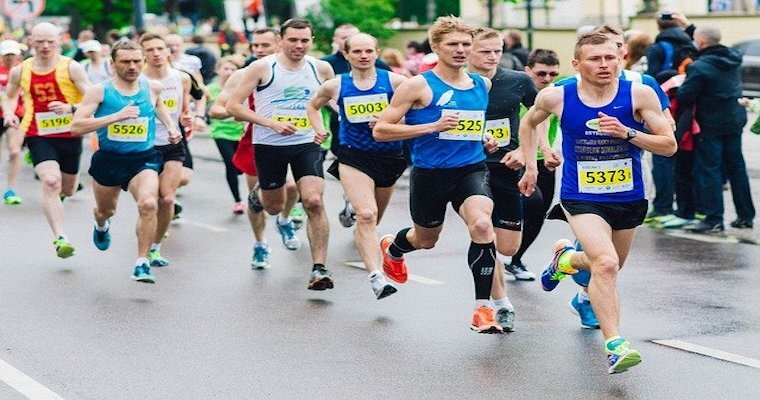
Runners, and their running performances, depend on physiological and body parameters that improve through training. If we can improve our running performance, then most runners who run to improve and develop, would like to know how they can maximise their chances of running their best, more often. Across the world, runners take part in 5km and 10km races for recreation and competition. We know that one’s maximal oxygen uptake – what we call a VO2 max – running economy, and the threshold of anaerobic metabolism, combine to maximise one’s running performance. Running economy, for example, is a steady-state of oxygen use by the body at a particular velocity, and anaerobic metabolism is metabolism without oxygen. If you think about a 100m sprint, most athletes reach anaerobic metabolism quickly because of the severity of sprinting, so they cannot continue at such a velocity for over 60 metres and typically slow down (somewhat).
These components, however, are changeable and manageable. When we think about a VO2 max, we realise that our body can breathe well but perhaps our body (respiration and metabolism) cannot use the oxygen as it would like or as efficiently at it would like. With training, however, our body adapts to the training load and we get fitter. We can run faster for longer. Our body is an amazing machine that returns to us what we give to it and more.
This is our body – heart, lungs, blood, muscles and so on. But our body also carries fat and a high percentage of fat mass can hurt our performances, especially over longer distances such as the marathon. When we consider the body moving through space, we realise quickly how it needs to minimise the weight it carries to maximise the speed and distance it pursues. Not only does our fat mass slow us down, it also stresses muscles, ligaments and tendons to cope with the excess mass. For most runners, however, there is no issue here but for those beginning or returning to running, care and support is necessary to return in a healthy and efficient way.
Herrmann and colleagues hypothesised that a high fat mass and fat-free mass correlated with low running speed in the general population. Using body composition (using a skin callipers to measure body fat under the skin) rather than body mass index (using your height and weight to see if your weight is healthy), these researchers explored whether body composition influences running speed and whether it predicts running speed better than body mass index. 1353 women and 1771 men took part in this study. What the researchers found was that the higher the fat mass index, the lower the running speed in women and men. A fat-free mass index (greater than 20kg/m2) correlated with a poor running performance. Body composition predicted speed better than BMI in women and men. It’s clear that measuring our body composition is necessary to understand the fat percentage and fat-free percentage in our bodies. But also, we need to look after our bodies to capture the right mass of muscle and fat to run to our best. Luckily, we can manage these challenges and offer ourselves the best chances of running well and minimising an overload on our bodies. Choosing to work with a personal trainer, exercise physiologist, or running coach will help you get this balance right.
Reference
Herrmann, G. (2019). Running performance in a timed city run and body composition: A cross-sectional study in more than 3000 runners. Nutrition, 61, 1–7. https://doi.org/10.1016/j.nut.2018.10.022
